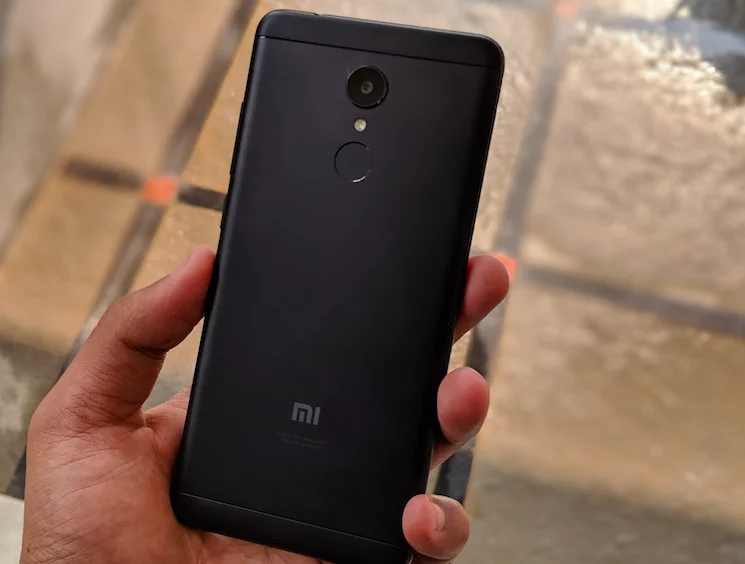The price point of under Rs 10,000 has always been a very competitive segment for all kinds of smartphone makers. Most brands are upgrading what they offer at such a low price so that they can attract more and more buyers from this particular budget oriented crowd of buyers. One of the most popular phones around this price point happens to be the Xiaomi Redmi 5. The phone is already up and selling on the Amazon on an open market model. A new contender for the Redmi 5 is already here, which is the Moto G6. Recently, Motorola has announced additions to the E series and G series of smartphones. The Moto G6 is one of them. Below we highlight the main differences and similarities between the two competing phones.

Design and Display
Xiaomi has justified the design of the Redmi 5 by making it according to 2018 standards. The phone is almost bezel-less with curved edges and a plastic back, which does give a premium feel to the phone. The fingerprint sensor takes the middle spot on the rear side of the phone. The display on the Redmi 5 is a 5.7-inches IPS LCD with an 18:9 aspect ratio. The resolution of the phone stands at 720 x 1440 pixels. The screen is also protected by Corning Gorilla Glass.
The Moto G6 on first looks gives the feel of a dated device, as Motorola has put very little thought and innovation into the design of their phone. The fingerprint scanner has also been placed on the front side, thus the Moto G6 resembles the G5 and the other Moto phones very well. The G6 also has a similar size 5.7-inch IPS LCD capacitive display with the same 18:9 aspect ratio. This phone, however, does boast of a higher resolution with 1080 x 2160 pixels. For protection from scratches and bumps, the handset comes with Corning Gorilla Glass 3. Besides that, the phone is also splash resistant.
Performance and Software
Xiaomi’s Redmi 5 bases its performance on the Qualcomm Snapdragon 450 which is an octa-core 1.8 GHz Cortex-A53 CPU. For graphics, the chipset is accompanied by Adreno 506 GPU. The Redmi 5 is available in three variants in India with 2GB RAM and 16GB storage, 3GB RAM and 32GB storage, and 4GB RAM and 64GB storage, with the internal storage on the phone being expandable up to 128GB. The Redmi 5 runs on MIUI 9.5 which is based on top of Android Nougat 7.1.2 out of the box. However, the phone after gaining certain popularity in the market has been expectedly marked to get an Android Oreo update soon. On the stamina and power front, the Redmi 5 performs a slightly better than the Moto G6 with a 3300mAh battery.

The Motorola manufactured Moto G6 shares the exact same chipset as its rival, the Redmi 5. The Moto phone also runs the Qualcomm SDM450 Snapdragon 450 octa-core 1.8 GHz Cortex-A53 CPU coupled with Adreno 506 GPU for graphics. The Motorola phone, however, does have an edge in its RAM, as the phone ships in two variants of 64 GB/4 GB RAM or 32 GB/3 GB RAM. Moto phones have been known to use stock Android, without much tweaking and same is the case here with Moto G6 shipping with Android Oreo 8.0 out of the box. The battery on this handset remains a 3000mAh pack which is suited to last a day of moderate to low usage.
Camera
The Xiaomi Redmi 5 sports a single camera setup involving a 12MP rear shooter with f/2.2 aperture and 1.25 ?m pixel size. The camera also embeds features like phase detection autofocus and LED flash. Additionally, there are other features in the camera application like Geo-tagging, touch focus, face/smile detection, HDR, panorama. Speaking of the video quality, the rear camera is able to record video at 1080p at 30fps. For selfies, the phone comes with a single front shooter of 5MP, which can also record videos at 1080p.

The Moto G6 blows the Redmi 5 out of the waters in the camera comparison by sporting a dual rear camera setup which includes a primary sensor of 12MP with f/1.8 aperture and a secondary sensor of 5MP with f/2.2 aperture. This camera also comes enabled with features like phase detection autofocus and dual-LED dual-tone flash. The video quality also gets an upgrade as the camera is able to shoot videos in 1080p at 60/30fps unlike the single option of 30fps in the Redmi 5. The front camera on the phone is a decent selfie shooter of 8MP with f/2.2 aperture accompanied by a LED flash. The front camera is also able to shoot videos in 1080p.
Pricing
The Xiaomi Redmi 5 which comes in four colours of Black, Gold, Light Blue, Rose Gold retails at the price of Rs 7,999 for the 32GB variant and comes with a price tag of Rs 8,999 for the 64GB variant. On the other hand, the Moto G6 which comes in four colours of Deep Indigo, Silver, Blush, Black retails at 249 Euro (approx. Rs 19,999). But the price of the device will be slightly lesser when it launches in the Indian market.















